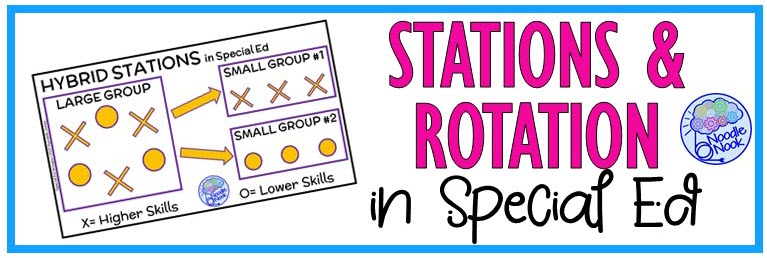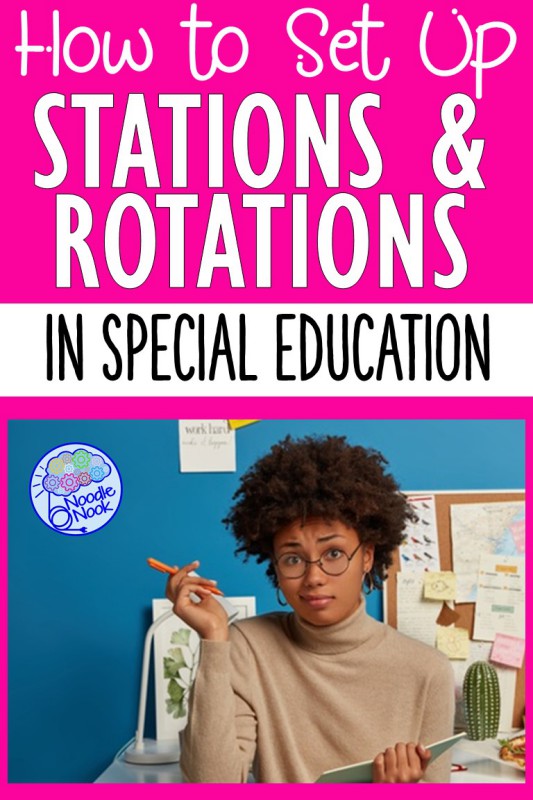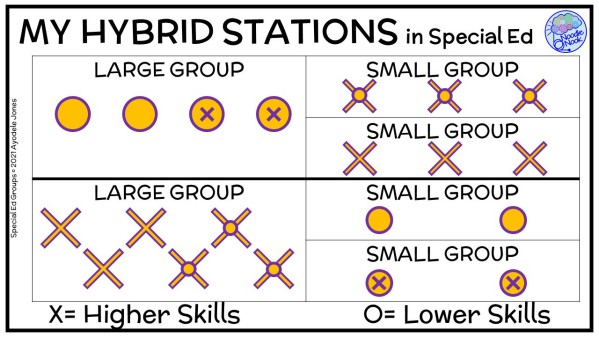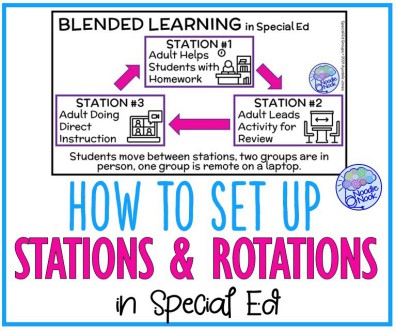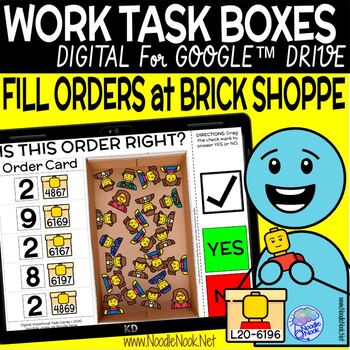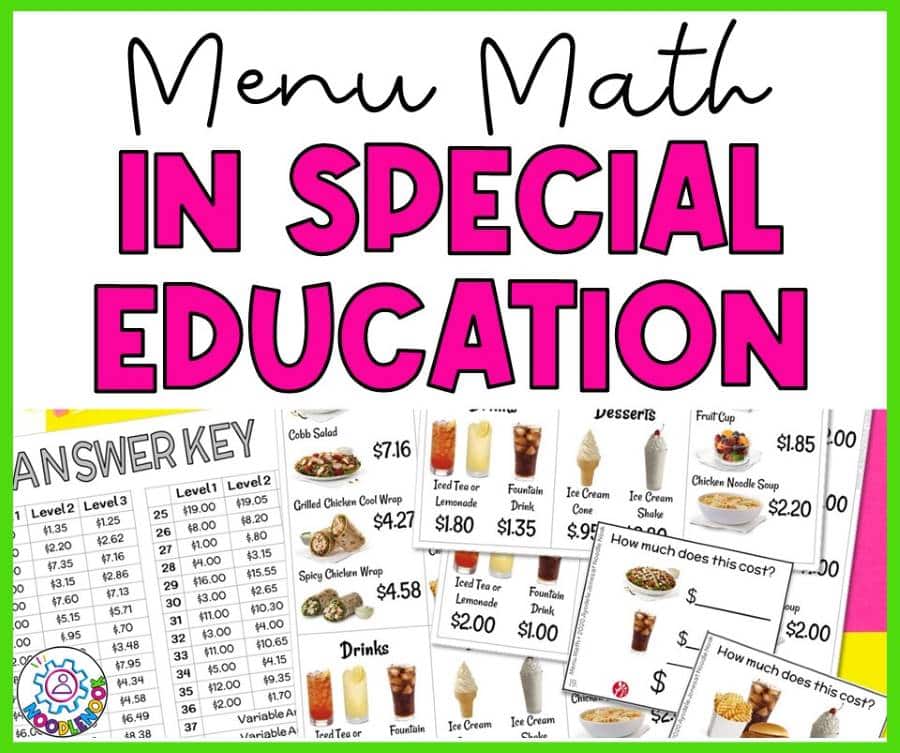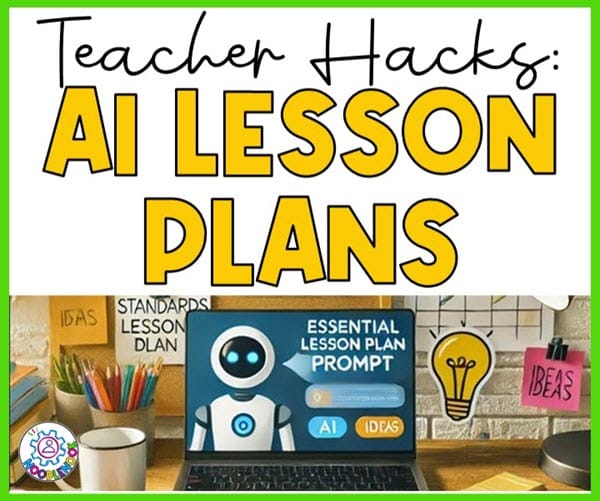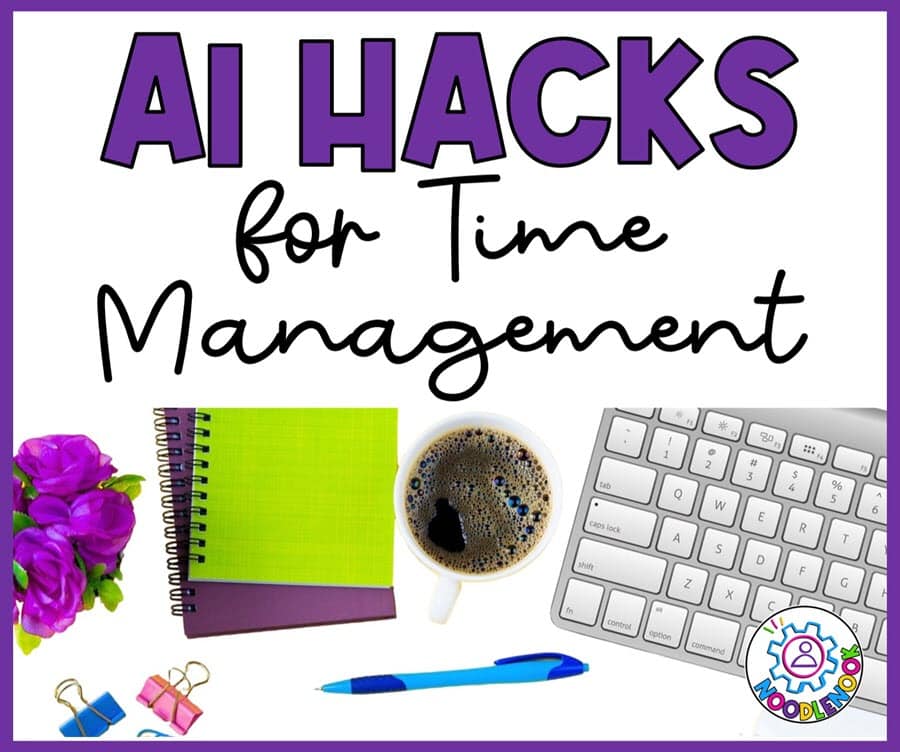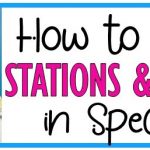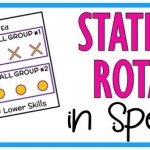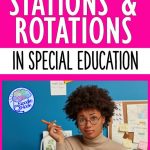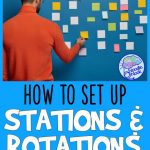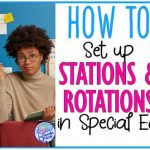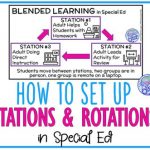If you are starting out and trying to figure out HOW to set up stations and rotations in special ed (especially secondary), then we’ve got you covered. I have done stations or rotations in my SpEd class forever! It has worked for years across multiple grade and ability levels. In every situation, it makes my life easier, my students more structured, and my paras more effective.
Literally, it is a win-win-win situation, no matter what or who you teach.
To get started, you’ll have to decide what’s going to work best for your students, your content matter, and the staff. There are some great ways to organize yourself…
Small Group Rotations
I love teaching in small groups with rotations. Each adult gets to teach the same small lesson three times to three different groups of students… that means you are never with the same kids too long AND you get to really master the materials you’re teaching. If you structure your station activities to be cyclical, then you’ll start to establish a rhythm and everyone gets to become a master at what (and who) they teach.
When you teach in a secondary classroom, you’re likely working with 40–75-minute class periods. If you are running rotations, then each of the three rotations will last about 10-20 minutes with a minute or two in between each to rotate. You can have students rotate or, depending on the needs of your students, you can have the adults rotate and the students stay in their seats. Either or.
PRO TIP: Set a timer… it’s easy to forget to rotate and have one 20-minute rotation, one 40-minute rotation, and one 5-minute rotation. Also, be sure to have a predictable transition routine (like music or a song or dimming the lights). This will help ease any anxiety as things change and people move around.
Mixed Groups Rotations
It sounds counter-intuitive to have a mixed group in Special Ed, but this may be the best way to set up stations in your secondary classroom. Inevitably you have some students in your class who are almost too high for you… and then you have students who need so much help, they are almost a class in and of themselves! With mixed-ability groups, I find that the higher-abled kids can work with less support and that allows me to give more support to the lower-skilled students who need it. Then, when it is time to break out, I can mix things up from there.
With this option, your stations may look like this:
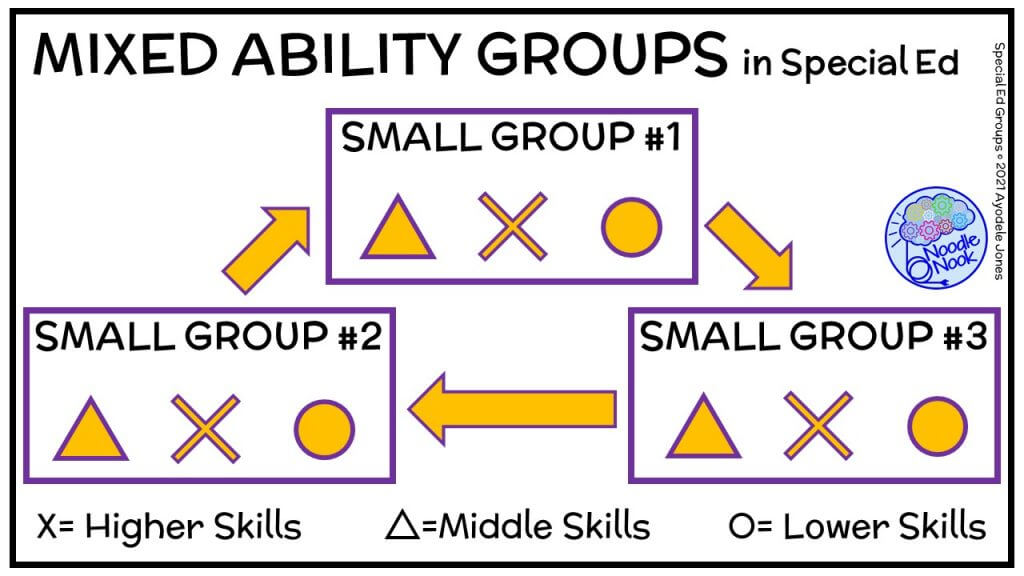
When setting up mixed group rotations in the special education classroom, start by dividing students into higher-skilled, middle-skilled, and lower-skilled. Once you have them divided, make even groups with at least one student from each skill set. This will create your three rotation groups.
Nothing is set in stone here; you can change things as needed… so don’t laminate that schedule just yet. You WILL end up changing at least one thing before all is said and done.
Remember, a student’s skill level may change with certain tasks. For example, in reading a student may be high, but in writing, they may be low. Try to pair them with a student who compliments them.
Benefits and Challenges of Mixed Group Rotations
When it comes to mixed group rotations in sped classes, there are some clear benefits. First, because you have a high, middle, and low student, you can offer more attention to the lower student, allow the student who is higher to work more independently and help the middle-skilled student as needed when they have questions. In a perfect world, the higher-skilled student may even be able to help the middle-skilled student when they have questions and the middle-skilled student may tutor the lower-skilled student when you are supporting the higher-skilled kiddo. With this mixed group, you have options.
The challenges are what you would expect. The lower-skilled student may end up taking all of your time and your high student isn’t getting challenged because you are busy while the middle-skilled student isn’t getting the help they need because, again, you’re busy. It starts to feel like you’re neglecting everyone and helping no one.
Leveled Rotations
The alternative to mixed groups when you’re setting up stations and rotations in secondary special ed classrooms is to level out the students based on ability. This is what I tend to see most often. There are some challenges to this model. If you’ve ever found yourself teaching a small group of students will high needs, then you know what they are. When a lot of students need your help all at once, it can feel like you’re not helping anyone well. On the positive side, when you have a leveled group, you can really tailor the activity, visuals, and supports to meet the needs of the group.
With this option, your stations may look like this:
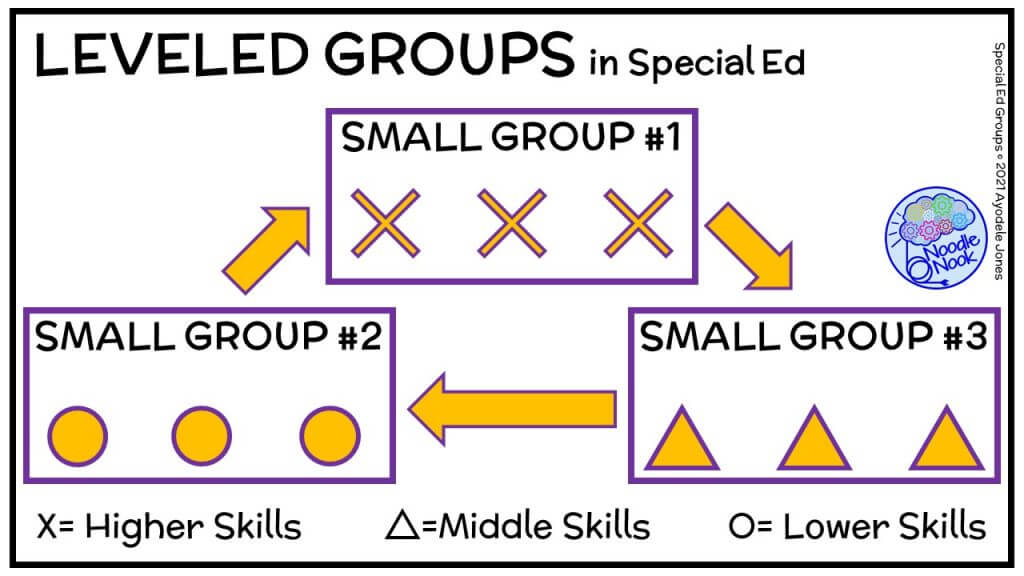
As I mentioned, mixed and leveled groups both have pros and cons. The one that works best for you will depend largely on the students in your class, their communication skills, and their behavior. It will also depend greatly on the support staff working with you.
Small Group Stations
As much as I love, love, love rotations… I REALLY love stations. What’s the difference? With a station approach, you teach a large group lesson and then break out into different stations (as opposed to three small group rotations). It allows for differentiation as well as quality instruction. The difference is minor. In fact, the terms are used interchangeably in a lot of places.
If you teach in a secondary classroom that has a LOT going on at the beginning of a class, then this model may really support you and your students. For me, when I taught students who had more physical needs, I found that at the start of every class, we were always taking care of personal needs, positioning, and medical needs too. It was almost an afterthought to teach! That’s where the station model was great. We would have a station for large group and then another for two small breakouts. I would make one of the small groups a ‘personal care’ station. At that station, students would get restroomed, get meds, have breathing treatments, and so on. Meanwhile, the activity at the station was super low-key, like listening to an audiobook.
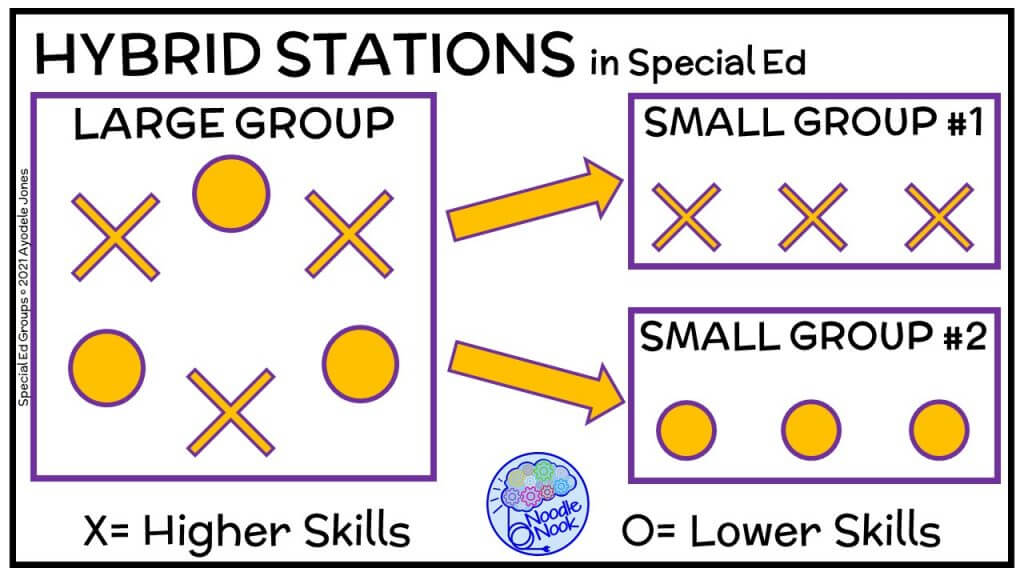
If your students are the opposite of this, then I have been there too. Students who should almost not have a label are in your class, thirsting for information and to actually learn! Stations seemed to be the one way I could actually get them learning more while not teaching over my student who were not that skilled yet. Here’s how it looked.
PRO TIP: If you are always trying to figure out when your support staff is supposed to use the restroom or go to lunch, large group time is the perfect time to do that. You’ll have all the students doing their group lesson and, when your aide returns, then you all break out.
Getting Started with Stations
When you first get started, my guess is you’re probably already using a large group format. That means to start stations, just wrap up the first-time instruction and primary activity first. If you have a 50-minute class, then try to get everything done in less than 30 minutes.
After that, you’ll split into two small group activities. You can have those leveled or mixed. This format is great if you only have one classroom aide or support staff person. Use this time to reinforce the lesson concepts, do practice activities, or target IEP goals.
Make Station Groups
Just like above, you’ll break your class into two groups based on a student’s skill level. Stations can either be mixed ability or leveled. This will totally depend on you.
You can mix things up here. Maybe some days you want mixed, other days you want to be leveled, and still other days based on age or grade or gender even! This setup lets you mix things up as you like.
PRO TIP: in the beginning when you are starting out, DON’T mix things up. Keep them predictable and routine. Later, when everyone is clear on the procedures and expectations, start mixing things up. Because they know how it’s all supposed to be done, there’s less anxiety when you change it up. Just be sure to let students know ahead of time so they can be prepared.
Benefits and Challenges of Stations
If you already teach a larger group, then stations are the way you should go. It is going to lessen the time you spend in the front of the room grandstanding (or lecturing) and allow students to practice the skills you’ve just taught with more direct attention.
My only warning (and the biggest challenge) is it can be super ineffective to teach special ed students in a large group. You cannot meet the needs of students most effectively. When I do classroom support and observation, if I see grandstanding, then it’s the first thing I try to change. It is the worst way to support SpEd students. So, if this is you, add stations right away to break up the badness.
MY Hybrid Station Rotation Model.
After all my years of teaching, I ended up loving a hybrid stations and rotation model. It looks something like this.
I teach a larger group of students (but not all the students at once) for half the class period. In my 60-minute classes, this was a 30-minute large group. Meanwhile, the other half of the students are doing two stations, each for 15 minutes. One station was with an aide and the other was independent (I usually only had one aide). If I happened to have two paraeducators, then I would have one at each station. They each led a small group activity, review lesson, or data collection session. After 15 minutes, they would switch students.
After 30 minutes, we would rotate my large group into their small group stations and their small group station students into my large group.
All the students would end up with a 30-minute session with me in a larger group getting quality first-time instruction. They would also have two 15-minute sessions with a paraeducator doing activities or reviewing materials.
As far as leveled versus mixed, for me I preferred leveled. It allowed my stations to really challenge each student in an appropriate way. With my lower-skilled students, I could get the higher student in those groups to work with more rigor in stations. Likewise, for my higher-skilled students who were struggling, their stations were more about review. My stronger higher students were given extension activities are more difficult work.
How to Set Up Stations and Rotations in Secondary Special Ed
Well y’all, there you go! Some great ways to implement stations and rotations in special ed. Hope you found the tips, visuals, and suggestions helpful as you set things up in your sped class. Looking for more information on teaching rotations? Check out this post on using stations during remote learning or this one on how to differentiate.
Stay Strong and Teach On!
P.S. Want some great activities to use during your stations? Check out this adapted Black History month-long unit for Special Ed that already comes with the lesson plans set up for stations and rotations in special ed classes just like yours! You can read more about that here.

